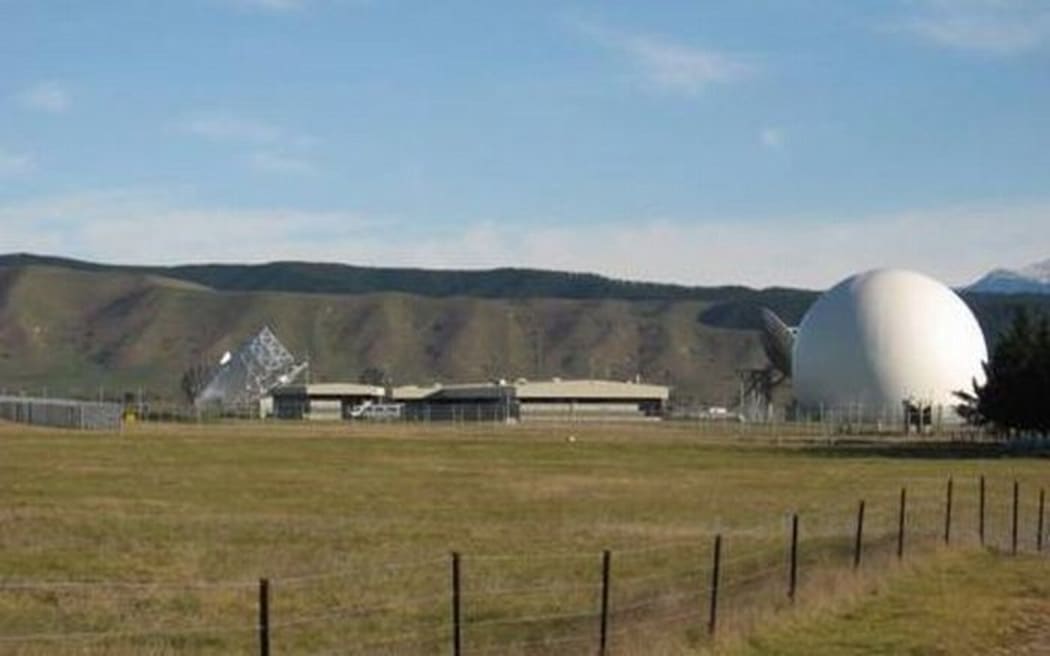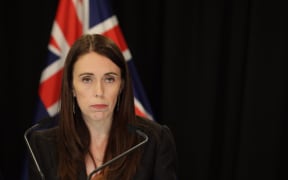New Zealand is enmeshed in a spider's web of security agencies and an alphabet soup of committees and panels attached to them.
A survey of the security community, as it's blandly called, shows the major organisations in the intelligence community include the best known Security Intelligence Service (SIS), and the Government Communications Security Bureau (GCSB), which have each spawned lesser specialist groups.

The Government Communications Security Bureau (GCSB)'s spy base at Waihopai, near Blenheim. Photo: Supplied
Read a timeline of the actions by New Zealand's security services, government and the country's Muslim community in the years leading up to the Christchurch mosque attacks.
Several departments - police, immigration, primary industries, defence and customs run their own specialist units tracking threats specific to their business - such as biological, money laundering and illegal entry.
But attached to these major agencies are a plethora of committees, advisory, watch and working groups, which are designed to swing into action in any perceived or real threat.
The guiding principles are called the 4Rs - reduction, readiness, response, and recovery. There are seven key objectives, from ensuring public safety through to protecting the natural environment.
A national security system handbook details the security web.
Centre of the web - the National Security Group
At the centre of the intelligence web sits the National Security Group (NSG).
Its vision is: "We are building systems to assist us to analyse, prioritise and treat the most important potential threats facing New Zealand, such as risks from natural hazards, cyber and man-made threats."
For the government of the day the Cabinet National Security Committee, chaired by the Prime Minister as the Minister for National Security and Intelligence, is the top political level for preparing to cope with threats.
The bureaucratic web is run by the Department of Prime Minister and Cabinet, which runs a specialist assessment bureau.
The Officials' Committee for Domestic and External Security Coordination (ODESC) contains chief executives of key departments, and has oversight of the policy, analysis and response to security threats or incidents.
Under this is the Security and Intelligence Board (SIB), which held 11 meetings in 2017-18. A Hazard Risk Board looks at civil issues such as transport and civil defence.
And below this is a range of committees with specific tasks: the Counter-Terrorism Coordinating Committee (CTCC), the National Intelligence Coordination Committee (NICC), the Intelligence and Assessments Directorate.
Sitting within the national security community are several specialist teams:
- A National Risk Unit - "To support a more emphatic approach to risk", which appears to mean "to develop an improved overall picture of the system's capability to manage them". It has been planning a public report about the usually secret National Risk Register to encourage public acceptance and support.
- A National Security Workforce team - It spots talent and recruits. Among its aims is to make the spy workforce more "diverse" and "agile".
- A National Security Policy Directorate - It updates the National Intelligence Priorities, which are due to be given to Cabinet in the first quarter of the year.
The guardians
The SIS and GCSB are the front-line agencies of the security and intelligence community. A third group, the National Assessments Bureau, gives weekly briefings to the prime minister - these make up the "secret" intelligence community.
The SIS has a Protective Monitoring Centre, with online capability. It also houses the Combined Threat Assessment Group (CTAG), which helps to set the national terrorism threat level.
ODESC is usually the first to swing into action on any issue - assessing information, coordinating action, advising government.
Police also carry a significant national security and intelligence function.
It has a specialist counter-terrorism resource providing the armed response to any threat. It has a National Intelligence Centre, with sections such as Analytical Services, Intelligence Operations (recently bolstered to go after organised crime), and Security Intelligence and Threats.
Further down the chain are Watch Groups - convened to handle specific incidents - 28 of them in recent years to respond to such issues as the Kaikōura earthquake, cyber threats, counter-terrorism, and Havelock North's water supply.
Below the Watch Groups are working groups, sometimes of external experts, which feed information and advice.
Legal shake-up, financial boost
The last significant shake-up of the security community was as recently as 2016 with the passing of the New Zealand Intelligence and Security Act, which followed a review of intelligence and security by Dame Patsy Reddy and Sir Michael Cullen.
That review came from revelations that the GCSB had illegally spied on Kim Dotcom. The resulting 2017 act replaced four pieces of legislation with one comprehensive law covering the agencies and their oversight. It essentially did away with the previous distinction that the SIS looked at New Zealand and the GCSB looked overseas.
Consistent with New Zealand's membership of the Five Eyes intelligence club, which groups New Zealand with Australia, Britain, the United States and Canada, much of the emphasis on intelligence gathering and security has been at perceived external threats such as jihadism, ISIS, and extreme Muslim activities.
A specialist coordinator for counter-terrorism is responsible for giving counter-terrorism risk management advice.
At the same time the agencies received a significant increase in money. The 2016 budget gave the intelligence community a $178 million boost over four years. Since 2013, spending in the area has more than doubled from $67m in 2013 to $138.6m in 2017. This year the agencies have $153m.
The government is currently refining the terms of reference for a Royal Commission of Inquiry into the Christchurch mosque shootings. It will look at the specific circumstances leading up to the terror attacks and the role of agencies, which failed to have any inkling of the attack.





